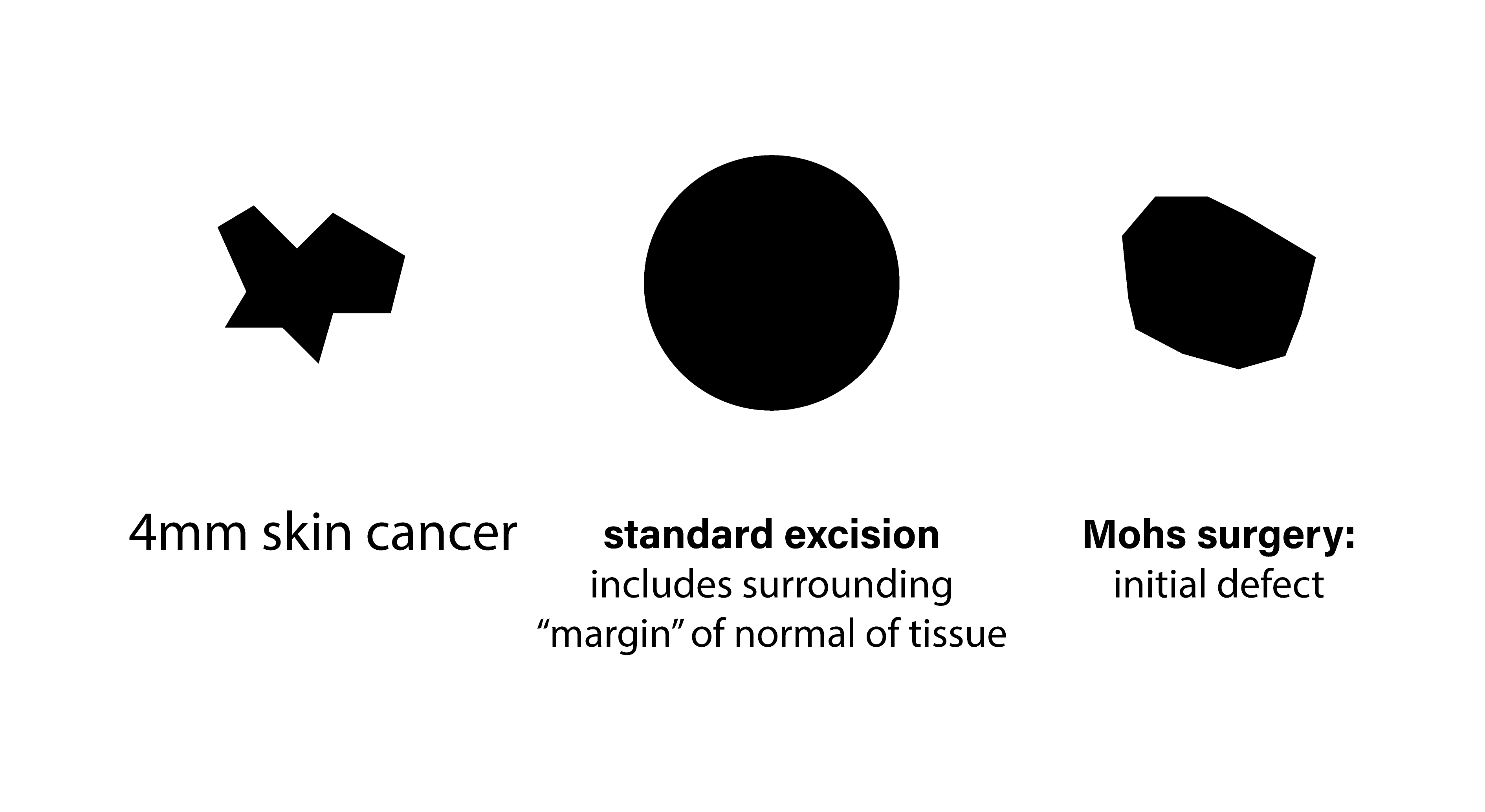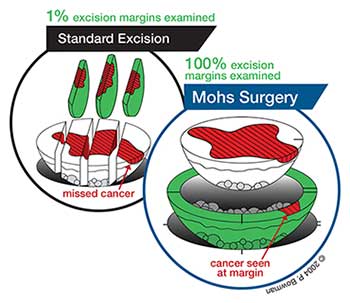What is Mohs Surgery?
In the 1930s, Dr. Frederic Mohs, a Professor of Surgery, recognized that skin cancer often grows in asymmetric and unpredictable patterns, and can extend well beyond what is present on the surface of the skin. What is seen on the skin may only be the “tip of the iceberg” with most of the tumor extending below the surface. The cancer cells can grow downward and outward into the skin like the roots of a tree. These “roots” are tiny and not visible to the naked eye, but can be seen under a microscope. Dr. Mohs then developed a unique method of removing the cancer in stages – one layer at a time. This allows the surgeon to follow and remove these “roots” while preserving the surrounding normal tissue. It has since been refined into the most advanced, precise, and effective treatment for skin cancers today.
What are the advantages of Mohs surgery?
Highest cure rate
Mohs surgery is the gold standard of care for skin cancer in many instances and can have the highest cure rate – up to 99%.
Removes the least amount of tissue
No extra “margin” of normal tissue has to be removed around the cancer
How is Mohs surgery different from other skin cancer treatments?
Only the cancerous tissue is removed.
No additional “margin” of normal tissue must be taken around it to “make sure we get it all.”

Only in Mohs Surgery are 100% of the excised tissue edges actually examined microscopically, as opposed to less than 1% of the margins in a standard excision. The way the tissue is removed, processed, and examined in completely different from other methods.

The Surgeon and the Pathologist are the same person.
The Mohs surgeon creates a precisely-oriented map at the time of tissue removal. After the tissue is processed, the same surgeon then looks at the tissue under he microscope to determine exactly where any remaining cancer cells are located in the patient.
Since Mohs surgery offers the highest cure rate among treatments for skin cancer, it is especially appropriate for skin cancers that:
- Are large
- Have edges that are ill-defined
- Grow rapidly
- Are located in scar tissue
- Occur in anatomic locations that are difficult to access or cosmetically or functionally important (face, hands, etc.)
- Are recurrent after previous treatment (or are likely to recur)
- Have an aggressive microscopic pattern (infiltrative basal cell carcinoma, etc.)
- Develop in organ transplant or lymphoma patients
What is a fellowship-trained Mohs surgeon?
The high cure rates of Mohs Micrographic Surgery are entirely dependent on how the procedure is performed. It requires the surgeon/pathologist performing the procedure to be very meticulous and have extreme attention to detail. As with any complicated procedure, it takes time and experience to become proficient.
Dr. Bowman spent two years at Saint Louis University completing an official Fellowship in Mohs Micrographic Surgery and is a fellow of the American College of Mohs Surgery (ACMS) – the only organization that requires an extensive one to two year fellowship of hands-on experience in Mohs surgery.
To see if a doctor has completed a Mohs fellowship with the ACMS, go to www.MohsCollege.org.


The Bowman Institute is pleased to provide the communities surrounding
Wesley Chapel, Brandon, Land O' Lakes, Lutz, Lakeland, Clearwater, and
St. Petersburg with the most advanced skin cancer treatments including Mohs surgery.

